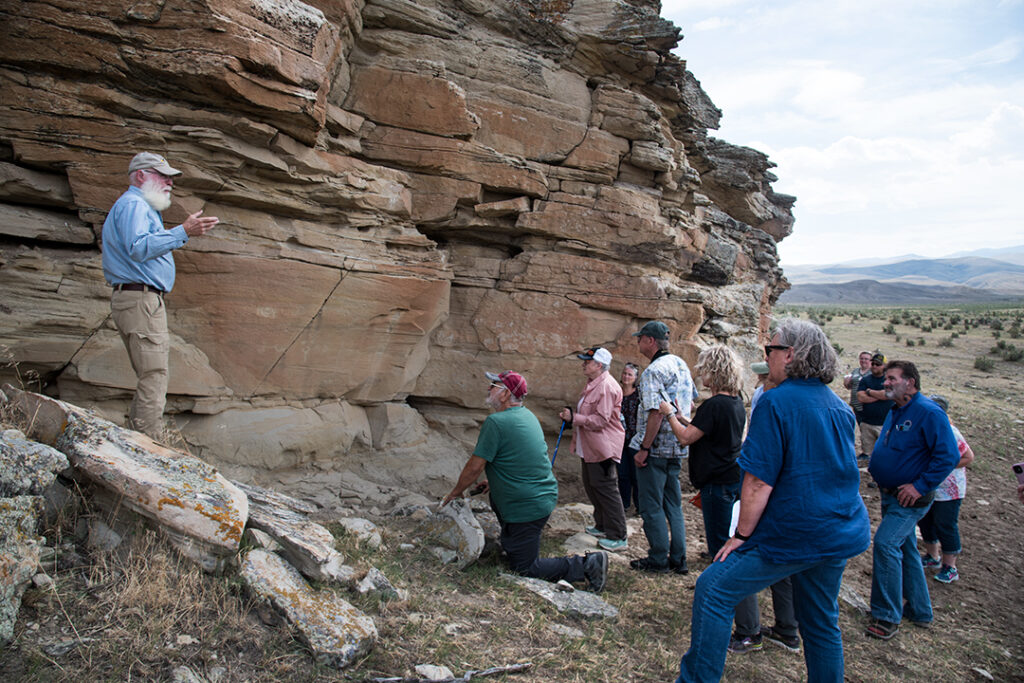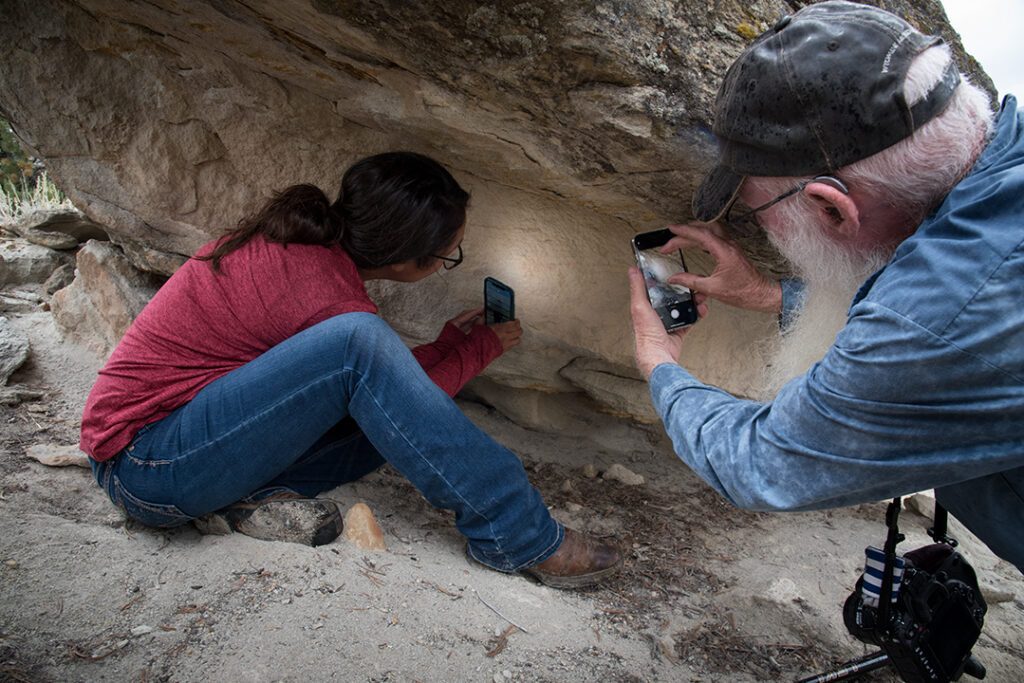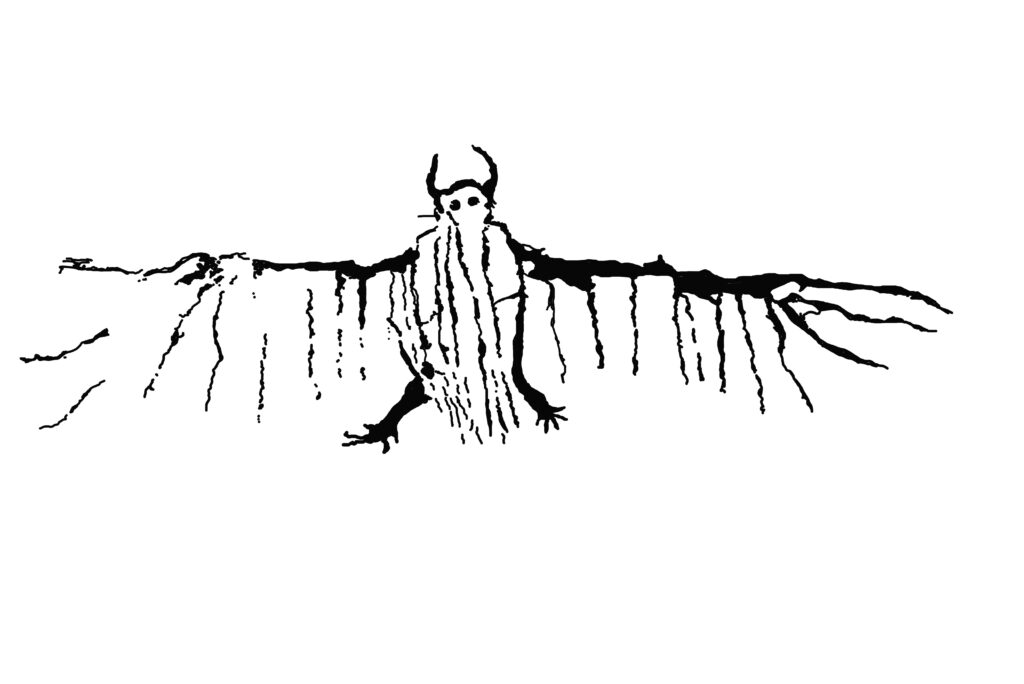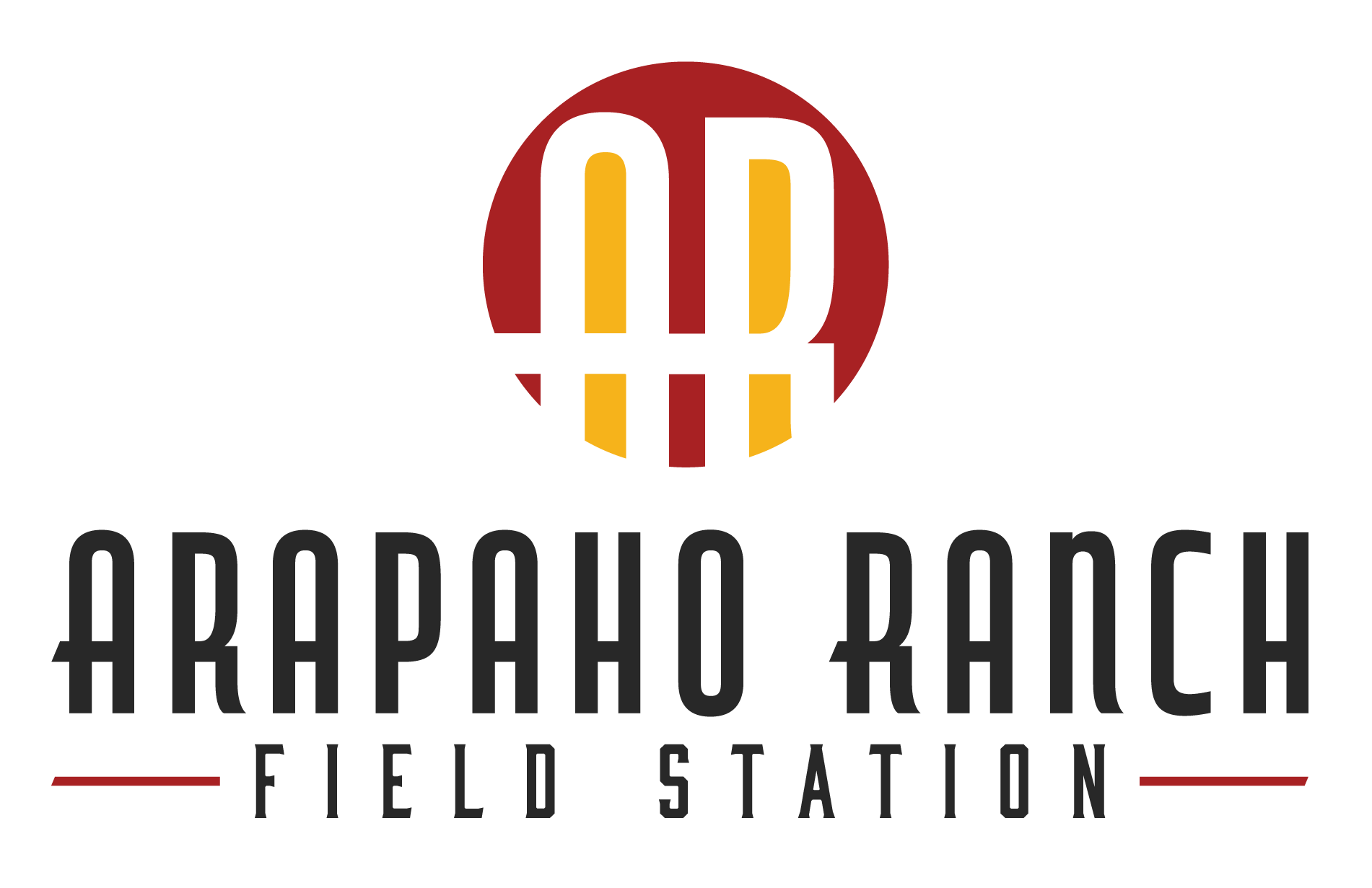With the knowledge and permission of both the Northern Arapaho Tribal Historic Preservation Office (NA-THPO) and the Arapaho Ranch Board, retired Rock Art Specialist Mike Bies is documenting an irreplaceable piece of the Arapaho Ranch Field Station’s history: Ancient petroglyphs and pictographs.
And time is of the essence.

In drought conditions, the rock faces in which petroglyphs and pictographs have been inscribed are calving off, similar to the calving or sloughing of the Polar Caps.
Additionally, situation fires and fire suppression chemicals will both adhere to the rock faces, making it impossible to remove them without also destroying the rock art beneath.
If Mike doesn’t work quickly, we’ll miss the opportunity to document these ancient works before they disappear.

Luckily, wonderful progress has already been made, with Mike documenting 25 petroglyphs last year alone via photos, drawings, and GPS locations. All documentation has been passed on to NA-THPO for safekeeping.
Additionally, a bright image of the petroglyphs used on Lens Clothes is available for purchase at Field Station, along with mugs, coasters and water bottles bearing a similar design.
The Story of “The Man-Eater” Petroglyph at Arapaho Ranch
Some petroglyphs are about hunting scenes and real-life happenings; some are based on mythic or spiritual Stories; others are like parables or myths.

One such petroglyph here on the ranch, known as “The Man Eater,” tells the tale of a bird so big it could snatch up two full-grown men at once and carry them away.
As the story goes, the bird has taken two men to the island he lives on with a woman who takes care of the place for him. Upon arrival at the island, the bird eats the first man, poops him out, and then the man comes back to life—instigating a horrific “eating and defecating” cycle that repeats over and over.
Meanwhile, while the bird eats the first man, the second man asks the woman on the island to help him escape. In response, she gives him a handful of obsidian chips left over from flint-knapping arrowheads. She tells him to carry the sharp chips and, when the bird eats him, to release those chips in the bird’s stomach so they’ll slice open the bird and kill him. When this happens, the man can run to the boat on the beach and escape.
In true mythic style, the bird does indeed die as planned, but comes back to life to hunt the escaped man for the rest of his life.
This story is just one of many Mike has helped preserve through his work at the ranch, and we’re incredibly grateful to him for his dedication to this important project.

While the areas in which Mike is working aren’t currently accessible to the public, you can see similar rock art at the Legend Rock State Park, just 29 miles northwest of Thermopolis.
What Other Projects Are in Store at the Ranch?
Visit our “Future” page to learn more about our plans to continue restoring and preserving the history of the Arapaho Ranch Field Station!

